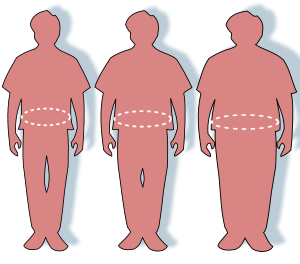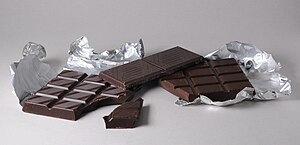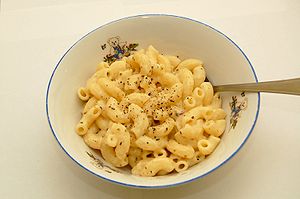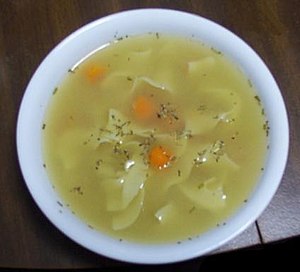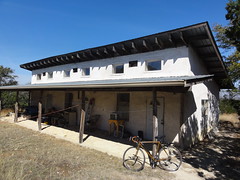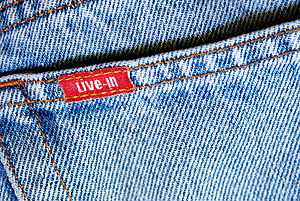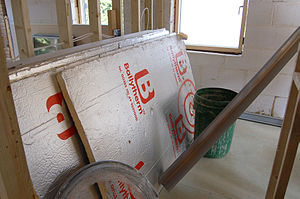It's fall, moving towards winter, and the time for warm, yummy bowls of comfort food! The problem is, comfort foods tend to be high in calories, and we tend to eat more of them, and exercise less, during the colder months. So what's a health-conscious comfort-food craver to do?
Instead of chowing down on needless sugar and fat calories, why not try one of these healthy comfort food alternatives instead? Making small adjustments to your already satisfying foods will help you cut the calories without cutting the taste.
|
|
| Home made macaroni and cheese, with some dried herbs and ground pepper. (Photo credit: Wikipedia) |
* Pasta is a great way to make you feel full and satisfied, but it’s also a great way to pack on the pounds. In your favorite pasta dish, try substituting whole grain or sprouted grain pasta. Sprouted grains are not only easier on the digestion, but they also contain healthful enzymes and additional nutrients which are more available to the body. For an extra dose of health food, be sure to add fresh or frozen vegetables.
* Macaroni and cheese is one of the all-time top comfort foods, but it’s also pretty fatty. Next time try making it with regular whole milk, but substituting some lower-fat cheese. It will still have the creamy goodness you love, without quite as much of the fat. (And as mentioned above, use whole-grain pasta.)
* Almost everyone out there loves chocolate when they’re stressed or sad, but you can still indulge without expanding your waistline. Instead of using milk chocolate in your recipes, try using dark chocolate, or cocoa powder when cooking. They have all the good taste of chocolate, but they’re chock full of antioxidants and other healthy things. Just remember, milk cuts down on the healthy benefits of dark chocolate, so use it sparingly in these recipes.
* Love hamburgers, meat loaf, or anything else with ground beef? Try substituting all or some of the ground beef in your recipes with ground turkey - or even better - venison if you can get it. It has a similar taste, but is much much leaner, and isn't full of the hormones and chemicals of traditionally raised beef. Even using a half and half mix can cut down on fat and calories in your meal. And if you must have beef, be sure it's organic and grass-fed! Grass-fed beef is not only lower in fat, but it is much higher in Omega-3 fatty acids, and healthier for you overall.
|
|
| Chicken soup is a common classic comfort food across many cultures. (Photo credit: Wikipedia) |
* Soup is great food for a cold day. But instead of using canned soup, next time make your own. Canned soups have tons of salt and preservatives. Simply by making the soup yourself instead of relying on cans makes the dish a whole lot healthier. Plus, you can make it just how your family likes it, and add all kinds of tasty and healthy ingredients!
* When I’m settling down and ready to eat a satisfying dinner, I LOVE mashed potatoes. To me there’s nothing better...except for maybe healthier mashed potatoes. By adding buttermilk instead of cream, you can keep the rich creamy taste with a lot less fat. Try my favorite - garlic mashed potatoes - or other herbs and seasonings which add flavor without fat. And if you have organically grown potatoes, you can try leaving some of the skins on - this provides visual interest, and retains more of the vitamins and nutrients of the potato.
* There is one way sure-fire way to help turn any food into a comfort food and that’s spices. When you cut back on fat and calories, some food may a tendency to get bland, so when making a new healthy recipe, pump up the spice. Turmeric and cinnamon are two super-powered spices when it comes to health, but many other herbs and spices are really good for you too. Try experimenting with different spices and quantities until you get it just right.
However, keep in mind that the healthiest foods are whole foods - the way God made them - which are naturally packed full of flavor anyway. The bland stuff tends to be processed and have much of the nutrients and flavor removed, which is why we add fat and sugar to make it palatable!
(See my previous posts on this Why We Need A New Definition of Healthy, and Why Real Food Tastes Good.) So if you're eating lots of fresh, healthy, whole and natural foods, in most cases you may not need to spice them up that much after all.
For more healthy eating ideas and tips, plus lots of great from-scratch recipes you can easily make at home, visit our
Cooking From Scratch blog!
